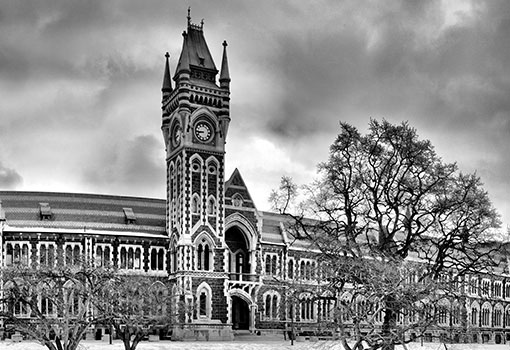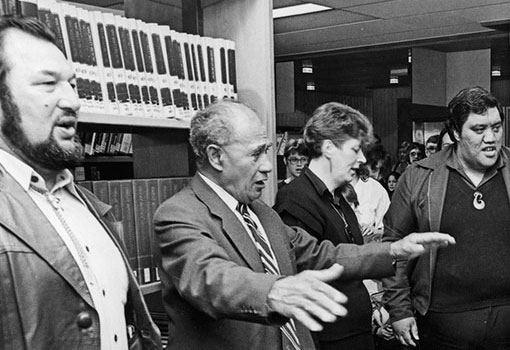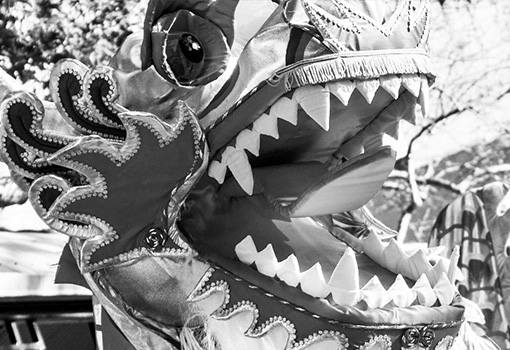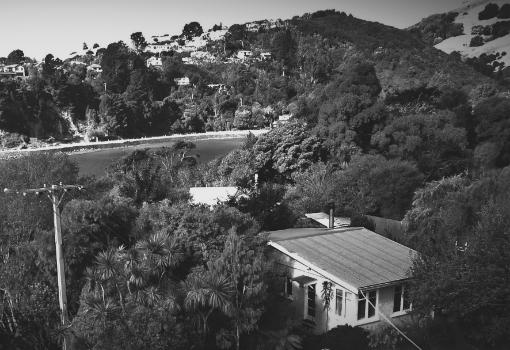Acts of creation
Posted: Wednesday May 05, 2021
Tane, Maui and Hine-nui-te-po are back, reclaimed and recast for new generations by master story teller Witi Ihimaera, writes Tom McKinlay.
So all consuming was the love between Ranginui and Papatuanuku they held each other in perpetual embrace, between them only darkness, no room for light.
However, their children, trapped between them, became restless and led by Tane separated the two to reveal te ao marama, the world of life and light.
It’s the creation story we all know.
Though maybe not all of us.
In the telling of Matiaha Tiramorehu, the 19th-century Moeraki-based Ngai Tahu rangitira, the sea god Tangaroa was in fact Papatuanuku’s beau. Ranginui was an interloper who, after fathering some children with Papatuanuku while Tangaroa was busy elsewhere, beseeched Tane and company to separate him from his paramour.
Quite a different story that, and just one small example of the many, many layered storytelling captured in Witi Ihimaera’s new book Navigating the Stars: Maori Creation Myths.
A shopping list written by the multi-award winning Ihimaera would read well; he of Whale Rider and Bulibasha and Nights in the Gardens of Spain.
But these stories are on another scale again, rich in time and distance, they sweep across ocean and space, wrapping back on themselves, stretching to the farthest corners of imagination and matauranga.
In recent years, the British writer and comedian Stephen Fry has breathed new life into Greek mythology, with animated retellings of those lusty adventures. But they begin to look a tad time-worn, a touch extraneous set beside this new volume by Ihimaera. Part of that might be because, for all Fry’s enthusiasm, he does not whakapapa to Mt Olympus. That’s not the whole story, though. These purakau (myths) of te ao Maori are epic; not just one heaven but 12, a cast of gods and tipuna to dwarf Hollywood spectacle.
Ihimaera says while the book took about six months to write, he’s really been writing it all his life. The time had arrived to publish, galvanised as he was by a desire to reclaim and decolonise the taonga tuku iho (stories handed down).
"There comes a moment when you read all the badly told, inaccurate or incorrect purakau about Tane separating earth and sky or Maui defeating Hine-nui-te-po," Ihimaera says from his Herne Bay home, "or you pick up a children’s book by a New Zealand author, Maori or Pakeha, and realise that they are still taking their course from [colonial-era governor] George Grey, among others, and you say ‘enough is enough’."
(Following his invasion of the Waikato, Grey retired to a life of ethnography.)
"So you go back to the source, the well before it started to be poisoned and — dumbass you — start to pour clear water into it. Maybe I muddied the water even further, I don’t know, but from the critical community there has been total silence."
Ihimaera is taking the positives from that silence, choosing not to hide behind a rock.
"More important, I’ve been on a number of marae since publication but so far haven’t had a taiaha shoved up my bum. Maybe that will come later, from those iwi whose canoe stories I have told in the book," he says with the sense of mischief he brings to many of the purakau.
It’s a bit like in the movie Clash of the Titans, he says, when angry Zeus unleashes a monster with the words, "Release the kraken!".
"What I like to think I’ve done in this book is utter a similar invocation. ‘Release the taniwha! Wetewete te wheke!"’
The book is really a history of the Maori as told through purakau, he explains. It begins with the gradual emergence of something from nothing, from Te Kore, moving through the 21 nights of Te Po, travelling via the time of the gods to the arrival of humankind. It also links the Maori story to that of the Ma’ohi, the ocean-spanning empire that takes in Hawai’i, Tahiti, Te Pito o te Henua (Easter Island) and other points on the Pacific compass.
Like the migrations that built the Ma’ohi empire, the book kept on growing, sailing well beyond the horizon of Ihimaera’s original intentions, the waka’s passenger list lengthening as it did so.
"I soon discovered myself with a cast of thousands on my hands," he confirms. "But I felt I had to play catch up. I had to show that our stories are as great as the Greek myths, sagas full of heroes, heroines, traitors, love, treachery, and other crunchy stuff."
The best scholars from the best schools have been writing about those Mediterranean pantheons for centuries, he notes.
"All I had was Dad and Nani Mini, and I come from Te Karaka District High. But I have tenacity, I’ve been holding on to this commitment to purakau for many years, and I think my experience as a novelist has made the storytelling buoyant. I’m not Homer but I think what I’ve tried to do is, well, Homeric."
Ihimaera’s father Te Haa and grandmother, Nani Mini, pop up regularly with pithy and apposite contributions and interjections.
Nani Mini brings the ihi in the cause of the female characters, in particular, who, like many of their Greek opposites, have troubled narratives.
Ihimaera too proves their champion and, indeed, nominates a couple as favourites.
"Hine-nui-te-po, definitely," he says, she who took on herself the weight of Tane’s trangressions and now welcomes all in death.
"I’ve tried to reclaim her and her narrative from years of misrepresentation as a primary character in our creation stories."
Maui’s sister also gets a shout out.
"Hinauri has an amazing trajectory as a Pacific heroine on a par with her brother."
There’s a certain amount of rehistoricisation and reversioning that takes place to bring everyone’s stories to the forefront, he admits.
"You can blame Nani Mini for that."
The book is another pou in the long whare of decolonisation and a conscious effort to re-establish the mana of not only these female characters, but the traditions themselves.
"I dedicate the book to all the tohunga-historians and storytellers in Hawaiki and Aotearoa who worked with the early ethnographers," he says.
"Some of them, like my ancestor Moihi Te Matorohanga, of Kahungunu, later regretted telling the purakau but realised that the world was changing and that for Maori to advance in the Pakeha world they must have their ur-texts, their prototypic origin stories."
After a manuscript of Te Matorohanga’s purakau was compiled, he himself removed the tapu from them — the ancient sacred stories, previously passed down through oral tradition — so they could be available to all without restrictions. He cooked kumara on a fire and then placed the book on top of them so that the manuscript was associated with a common thing.
"What tears me up inside and makes me rage with sorrow is his personal sacrifice in doing this," Ihimaera says.
"Te Matorohanga and the other people like him are the ones to whom we owe our greatest thanks. They did not deny us their knowledge, they gave it freely to Pakeha ethnographers on the expectation that they would treat the material with care and respect. Some did, some didn’t, that’s another story. But when I took up the challenge to create a restorative text in 2019, my intention was to try to gather up that thread, that aho tapu of the tohunga-historians I have mentioned, and tie or re-tie it strongly to the present.
"I tell you, if you had been passing my house in Herne Bay during the six months the main writing was being done, you would have heard a lot of karakia circling it, asking them for their forgiveness for even thinking of doing this mahi."
Among the feats the book called for was to accommodate the voices of these many tohunga-historians, allow them each their moment. Give space to those who favoured Tane and those whose hero was Tangaroa.
"One of the dilemmas was what to do with all the variations," Ihimaera admits, "different details, even different protagonists and various time discrepancies I came across."
In the end, a lot of the writing worked itself out in the moment, what he calls "inaianei".
"The answer was to pile them in. For too long generations of readers have been under the assumption that there is only one version of any story, it’s been driven by the power of the early press."
Ethnographer versions such as those by George Grey and Elsdon Best became canonic.
"But there isn’t just one whakapapa," Ihimaera clarifies.
"Instead there are genealogies of different stories. And what they point to is the amazing number of histories and migration traditions brought from various points of the Pacific by the many waka to Aotearoa. Te Wai Pounamu mythology is like a new country in this respect. So is Tainui. So is Tuhoe. Even a small iwi like mine, Te Whanau a Kai, has profoundly different stories of aching complexity and beauty.
"And those canoes that populated Te Wai Pounamu came with specialised knowledge that makes theirs an extremely unique and altogether fascinating number of myth inventories. My role in all this has been to open up the territory of purakau by acknowledging the plethora of exciting differences and richnesses therein."
With the field opened up, readers can have a good play, because — colonising attempts at standardisation notwithstanding — the richness and variation of the purakau bestowed by the unwritten millennia has endured, Ihimaera says.
"I like to think they stayed in the rich underground, Rarohenga, which some people think of as a scary place but has the power of the womb. There the wairua, power, tapu and mysticism could be maintained throughout the colonial era. Untouched by the profane Pakeha reo, they were like runes, ready to be cracked open and reveal their mysteries whenever people shared stories on marae. I have used this power in the book to wero the reader, challenge them, because there’s quite a bit of provocation in the book, I am in there, offering ways of reading the stories or thinking about them. Stirring the pot, if you like, to make everything layered and interesting."
The contemporary voice and critical assessment that Ihimaera brings clears the way for new generations to engage.
Ihimaera himself says in the book the purakau provide not only foundation narratives but also lessons on how the next generation can approach their "ancient-futures".
"Our ancestors faced the future with an energy and logic that was breathtaking," he says.
That can be instructional.
Take, for example, the stories of Te Mamaru, Mawake-Nui and Tukapua here, in Te Wai Pounamu, he says.
The story goes that in the moments after the first light began to strike Papatuanuku, following her separation from Ranginui, Te Mamaru and Mawake-Nui teamed up to provide her shade when she became too hot, working with Tukapua’s multifarious manifestations of cloud.
"By ensuring the comfort of their mother, the siblings also provided for the optimal conditions for their expanding sky, forest and sea environments below," Ihimaera writes in the book.
"[It’s] hugely instructional on how to deal with climate change," he says.
Ihimaera cites the explorations of Antarctic waters by the navigator Hui-te-rangiora as an example of the ancestors’ insatiable quest for scientific knowledge. In Whaka-o-te-rangi we have the story of a female conservator who brought kumara and other crops to New Zealand, he says, and Hineteariki is an example of the first recorded female astromancer, someone who combined the science of astronomy with matauranga Maori.
"Somewhat cheekily, I write that if Ma’ohi waka building practices had not been curtailed by Pakeha, we could be travelling not only through space but time by now, and I mean it.
"Although, today, the ways the world is going are hugely challenging, bringing exponential change, our ancestors’ stories are an inheritance — a valuable resource involving many technologies.
"They have within them wairua, providing the power to think fast and think smart. In particular to be kaitiaki and to keep navigating by the stars."
The talk
Witi Ihimaera will talk about his book, Navigating the Stars: Maori Creation Myths, at Dunedin Public Art Gallery, Friday, May 7.
Note: The Otago Daily Times acknowledges that many of the Maori words in this story should have carried macrons. The paper is working towards being able to print them.



